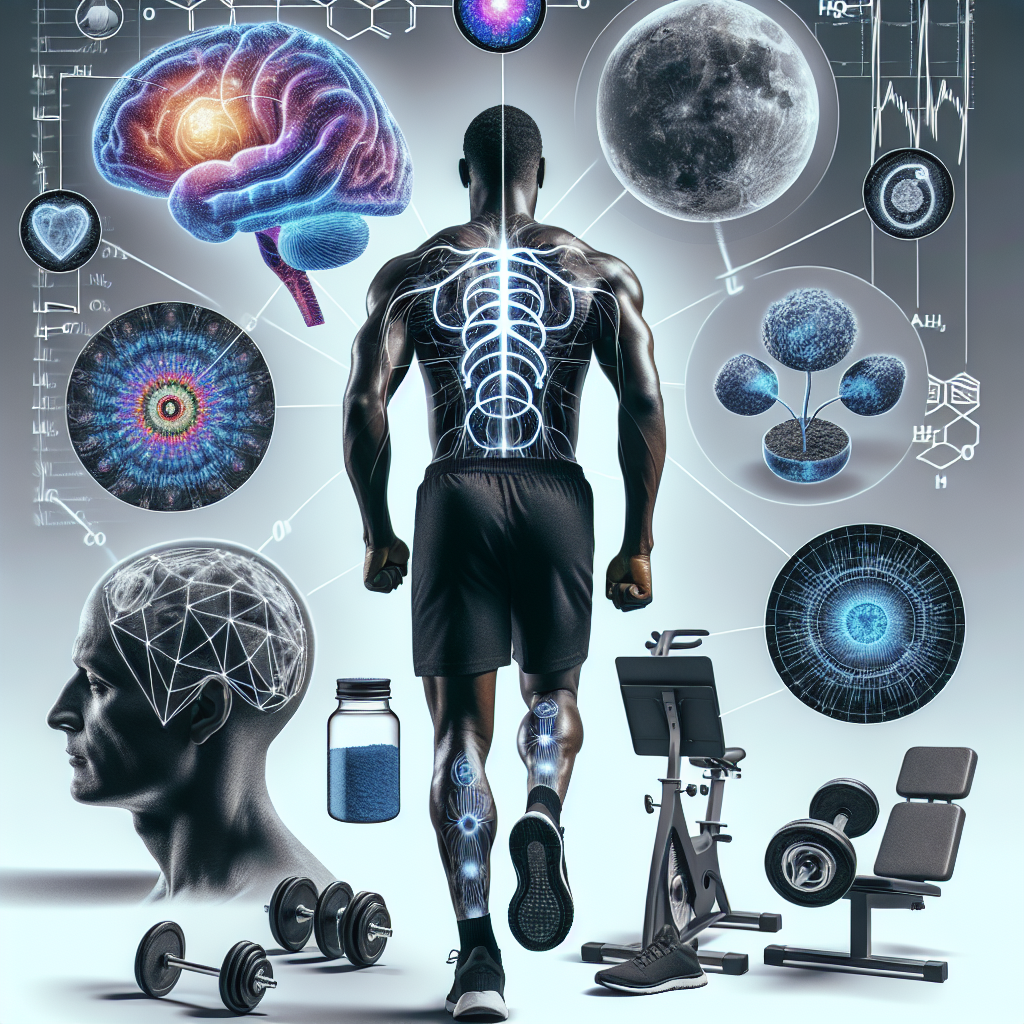-
Table of Contents
“Strengthening Body and Mind: The Vital Role of Physical Fitness in LSD Addiction Recovery”
Introduction

The Role of Physical Fitness in LSD Addiction Recovery
Physical fitness plays a crucial role in the recovery process for individuals overcoming LSD addiction. Engaging in regular physical activity can significantly enhance both the physical and mental well-being of those in recovery, providing a holistic approach to healing. Exercise helps to reduce stress, anxiety, and depression, which are common challenges faced during addiction recovery. It also promotes the release of endorphins, the body’s natural mood elevators, which can improve overall emotional stability. Additionally, physical fitness can aid in the restoration of healthy sleep patterns, boost self-esteem, and foster a sense of accomplishment and routine. By incorporating physical fitness into a comprehensive treatment plan, individuals recovering from LSD addiction can build a stronger foundation for long-term sobriety and overall health.
Benefits Of Physical Fitness In Overcoming LSD Addiction
The journey to overcoming LSD addiction is a multifaceted process that requires a combination of psychological, emotional, and physical strategies. Among these, physical fitness plays a crucial role in aiding recovery and promoting overall well-being. Engaging in regular physical activity can provide numerous benefits that support individuals in their quest to break free from the grip of addiction.
Firstly, physical fitness helps to restore the body’s natural balance, which is often disrupted by substance abuse. LSD, like many other drugs, can have profound effects on the brain and body, leading to imbalances in neurotransmitters and overall health. Regular exercise stimulates the production of endorphins, the body’s natural mood elevators, which can help to counteract the depressive and anxious states often experienced during withdrawal and recovery. This natural boost in mood can be a powerful motivator, encouraging individuals to stay committed to their recovery journey.
Moreover, physical fitness can serve as a healthy coping mechanism, replacing the harmful behaviors associated with addiction. When individuals engage in physical activities such as running, swimming, or yoga, they are not only improving their physical health but also finding constructive ways to manage stress and emotions. Exercise provides a positive outlet for releasing pent-up energy and frustration, reducing the likelihood of relapse. The sense of accomplishment and progress that comes with achieving fitness goals can also enhance self-esteem and confidence, which are often eroded by addiction.
In addition to the psychological benefits, physical fitness can improve cognitive function, which is particularly important for those recovering from LSD addiction. LSD can impair cognitive abilities, making it difficult for individuals to concentrate, remember, and make decisions. Regular physical activity has been shown to enhance brain function by increasing blood flow and promoting the growth of new neural connections. This cognitive boost can aid in the recovery process by improving mental clarity and focus, making it easier for individuals to engage in therapy and other recovery activities.
Furthermore, the social aspect of physical fitness should not be overlooked. Participating in group exercise classes, sports teams, or fitness communities can provide a sense of belonging and support, which is vital for those in recovery. Building new, healthy relationships can help to replace the social circles that may have been centered around drug use. These positive social interactions can provide encouragement, accountability, and a sense of camaraderie, all of which are essential for maintaining long-term sobriety.
It is also important to recognize that physical fitness can contribute to a healthier lifestyle overall. Regular exercise often leads to better sleep patterns, improved nutrition, and a stronger immune system. These physical health improvements can make the recovery process more manageable and increase the likelihood of sustained sobriety. When individuals feel physically strong and healthy, they are better equipped to face the challenges of recovery and are less likely to succumb to the temptations of relapse.
In conclusion, the role of physical fitness in overcoming LSD addiction cannot be overstated. By restoring the body’s natural balance, providing a healthy coping mechanism, improving cognitive function, fostering social connections, and promoting a healthier lifestyle, regular physical activity can be a powerful ally in the recovery process. Embracing physical fitness as part of a comprehensive recovery plan can inspire individuals to reclaim their lives and build a future free from addiction.
Exercise Routines To Support LSD Recovery
In the journey of recovering from LSD addiction, the role of physical fitness cannot be overstated. Exercise routines, when integrated thoughtfully into a recovery plan, can provide a multitude of benefits that support both the body and mind. As individuals navigate the complex path of overcoming addiction, physical fitness emerges as a powerful ally, offering not only physical health improvements but also significant psychological and emotional support.
To begin with, engaging in regular exercise helps to restore the body’s natural balance, which is often disrupted by substance abuse. LSD, like many other drugs, can wreak havoc on the body’s systems, leading to a range of physical health issues. Exercise promotes cardiovascular health, strengthens muscles, and enhances overall physical endurance. These improvements are crucial for individuals in recovery, as they help to rebuild the body’s resilience and vitality, making it easier to cope with the demands of daily life without relying on substances.
Moreover, physical fitness plays a pivotal role in mental health, which is a critical aspect of addiction recovery. Exercise has been shown to release endorphins, the body’s natural mood elevators. These chemicals help to reduce feelings of depression and anxiety, which are common during the recovery process. By incorporating regular physical activity into their routines, individuals can experience a natural boost in their mood and overall sense of well-being. This positive shift in mental state can be incredibly motivating, helping individuals to stay committed to their recovery goals.
In addition to the immediate benefits of endorphin release, exercise also promotes better sleep patterns. Many people recovering from LSD addiction struggle with sleep disturbances, which can exacerbate feelings of stress and anxiety. Regular physical activity helps to regulate sleep cycles, leading to more restful and restorative sleep. This, in turn, enhances cognitive function and emotional stability, providing a solid foundation for continued recovery efforts.
Furthermore, exercise routines can serve as a constructive outlet for managing stress and negative emotions. The process of recovery often involves confronting difficult emotions and situations that may have been previously masked by substance use. Physical activity offers a healthy way to channel these emotions, reducing the likelihood of relapse. Whether it’s through the rhythmic motion of running, the focused discipline of yoga, or the camaraderie of team sports, exercise provides a productive means of coping with the challenges of recovery.
Another significant benefit of incorporating exercise into LSD recovery is the sense of accomplishment and self-efficacy it fosters. Setting and achieving fitness goals, no matter how small, can build confidence and a sense of control over one’s life. This empowerment is crucial for individuals in recovery, as it reinforces the belief that they have the strength and capability to overcome their addiction.
Additionally, participating in group exercise activities can help to rebuild social connections, which are often strained or severed due to addiction. The support and encouragement from peers in a fitness class or sports team can create a sense of community and belonging. These positive social interactions are essential for emotional health and can provide a network of support that extends beyond the gym or playing field.
In conclusion, the integration of exercise routines into LSD addiction recovery offers a holistic approach that addresses both physical and mental health. By promoting physical well-being, enhancing mood, improving sleep, providing stress relief, fostering a sense of accomplishment, and rebuilding social connections, physical fitness becomes a cornerstone of a successful recovery journey. Embracing the power of exercise can inspire individuals to reclaim their lives, one step, one breath, and one heartbeat at a time.
How Physical Activity Enhances Mental Health During LSD Recovery
The journey to recovery from LSD addiction is often fraught with numerous challenges, both mental and physical. However, one powerful tool that can significantly enhance the recovery process is physical fitness. Engaging in regular physical activity not only strengthens the body but also plays a crucial role in improving mental health, which is essential for overcoming addiction. By understanding the multifaceted benefits of physical fitness, individuals in recovery can harness its potential to foster a healthier, more balanced life.
To begin with, physical activity has been shown to release endorphins, the body’s natural mood elevators. These chemicals interact with receptors in the brain to reduce the perception of pain and trigger a positive feeling in the body, similar to that of morphine. For someone recovering from LSD addiction, this natural high can be a healthy alternative to the artificial highs previously sought through drug use. Moreover, regular exercise can help to regulate the brain’s reward system, which is often disrupted by substance abuse. By establishing a new, healthy routine, individuals can retrain their brains to find pleasure in activities that are beneficial rather than harmful.
In addition to the biochemical benefits, physical fitness also provides a structured routine, which is crucial for those in recovery. The discipline required to maintain a regular exercise regimen can translate into other areas of life, promoting a sense of order and purpose. This structure can be particularly beneficial for individuals who may have experienced chaos and unpredictability during their addiction. Furthermore, setting and achieving fitness goals can boost self-esteem and provide a sense of accomplishment, which is vital for rebuilding a positive self-image.
Another significant aspect of physical fitness in LSD recovery is its impact on stress reduction. Exercise is a well-known stress reliever, helping to lower levels of cortisol, the body’s primary stress hormone. For individuals in recovery, managing stress is critical, as high stress levels can trigger cravings and potential relapse. By incorporating physical activity into their daily routine, individuals can develop healthier coping mechanisms to deal with stress and anxiety. Activities such as yoga, tai chi, and even simple stretching exercises can be particularly effective in promoting relaxation and mental clarity.
Moreover, physical fitness can enhance social connections, which are essential for a successful recovery. Group activities such as team sports, fitness classes, or running clubs provide opportunities to build supportive relationships with others who share similar interests. These social interactions can reduce feelings of isolation and loneliness, which are common during the recovery process. By fostering a sense of community, individuals can find encouragement and motivation to stay committed to their recovery goals.
It is also important to consider the holistic benefits of physical fitness on overall well-being. Regular exercise can improve sleep patterns, increase energy levels, and enhance cognitive function. These improvements can make it easier for individuals to focus on their recovery and engage in other therapeutic activities, such as counseling or support groups. Additionally, a healthy body can better withstand the physical demands of recovery, making the process more manageable and less daunting.
In conclusion, physical fitness plays a pivotal role in enhancing mental health during LSD addiction recovery. By promoting the release of endorphins, providing structure, reducing stress, fostering social connections, and improving overall well-being, regular physical activity can be a powerful ally in the journey to sobriety. Embracing physical fitness not only strengthens the body but also nurtures the mind, paving the way for a healthier, more fulfilling life free from addiction.
The Science Behind Physical Fitness And LSD Addiction Recovery
The journey to recovery from LSD addiction is often fraught with challenges, but emerging research highlights the pivotal role that physical fitness can play in this process. Understanding the science behind this connection can provide both hope and practical strategies for those seeking to overcome their dependence on LSD. Physical fitness, encompassing both exercise and overall bodily health, has been shown to have profound effects on the brain and body, which are crucial in the context of addiction recovery.
To begin with, engaging in regular physical activity can significantly influence brain chemistry. Exercise stimulates the production of endorphins, which are natural mood lifters. These endorphins can help counteract the depressive and anxious states that often accompany withdrawal from LSD. Moreover, physical activity increases the levels of neurotransmitters such as dopamine and serotonin, which are often depleted in individuals struggling with addiction. By naturally boosting these chemicals, exercise can help restore a sense of well-being and balance, making the recovery process more manageable.
In addition to its chemical benefits, physical fitness also promotes neuroplasticity, the brain’s ability to reorganize itself by forming new neural connections. This is particularly important for individuals recovering from LSD addiction, as the drug can cause significant alterations in brain function and structure. Through consistent physical activity, the brain can begin to heal and adapt, creating new pathways that support healthier behaviors and thought patterns. This neuroplasticity is a cornerstone of recovery, as it underpins the ability to learn new coping mechanisms and resist the urge to relapse.
Furthermore, the structure and routine provided by a regular fitness regimen can be incredibly beneficial for those in recovery. Addiction often leads to chaotic and unstructured lifestyles, which can perpetuate feelings of instability and stress. By incorporating regular exercise into their daily routine, individuals can establish a sense of order and predictability. This structure not only helps to fill the void left by the absence of drug use but also provides a constructive outlet for energy and emotions.
The social aspect of physical fitness should not be overlooked either. Many forms of exercise, such as group fitness classes, team sports, or even running clubs, offer opportunities for social interaction and support. Building a network of supportive, like-minded individuals can be invaluable during the recovery process. These social connections can provide encouragement, accountability, and a sense of belonging, all of which are essential for long-term recovery.
Moreover, the physical benefits of exercise extend beyond the brain to the body as a whole. Regular physical activity can improve cardiovascular health, boost the immune system, and enhance overall physical well-being. These improvements can lead to increased energy levels, better sleep, and a more positive self-image. Feeling physically strong and healthy can reinforce the mental and emotional aspects of recovery, creating a positive feedback loop that supports continued progress.
In conclusion, the science behind physical fitness and LSD addiction recovery is compelling. By positively influencing brain chemistry, promoting neuroplasticity, providing structure, fostering social connections, and enhancing overall physical health, exercise can play a crucial role in the recovery process. For those battling LSD addiction, incorporating physical fitness into their recovery plan can offer a multifaceted approach that addresses both the mind and body. This holistic strategy not only aids in overcoming addiction but also lays the foundation for a healthier, more fulfilling life.
Q&A
1. **Question:** How does physical fitness contribute to the mental health of individuals recovering from LSD addiction?
**Answer:** Physical fitness can improve mental health by reducing symptoms of anxiety and depression, enhancing mood through the release of endorphins, and providing a healthy outlet for stress relief.
2. **Question:** What specific types of physical activities are recommended for those in LSD addiction recovery?
**Answer:** Recommended physical activities include aerobic exercises like running, swimming, and cycling, as well as strength training, yoga, and mindfulness-based exercises such as tai chi.
3. **Question:** How does regular exercise impact the brain’s neurochemistry in the context of addiction recovery?
**Answer:** Regular exercise can increase the production of neurotransmitters like dopamine and serotonin, which are often depleted in individuals with addiction, thereby helping to restore balance and improve overall brain function.
4. **Question:** Can physical fitness routines help in preventing relapse in individuals recovering from LSD addiction? If so, how?
**Answer:** Yes, physical fitness routines can help prevent relapse by providing structure, reducing cravings through the regulation of stress hormones, improving sleep patterns, and fostering a sense of accomplishment and self-efficacy.
Conclusion
Physical fitness plays a crucial role in LSD addiction recovery by promoting overall well-being, reducing stress, and improving mental health. Regular physical activity helps to restore the body’s natural balance, enhances mood through the release of endorphins, and provides a healthy outlet for coping with cravings and emotional challenges. Additionally, engaging in fitness routines can foster a sense of accomplishment and self-discipline, which are essential for maintaining long-term sobriety. Therefore, incorporating physical fitness into a comprehensive treatment plan can significantly enhance the effectiveness of LSD addiction recovery efforts.



